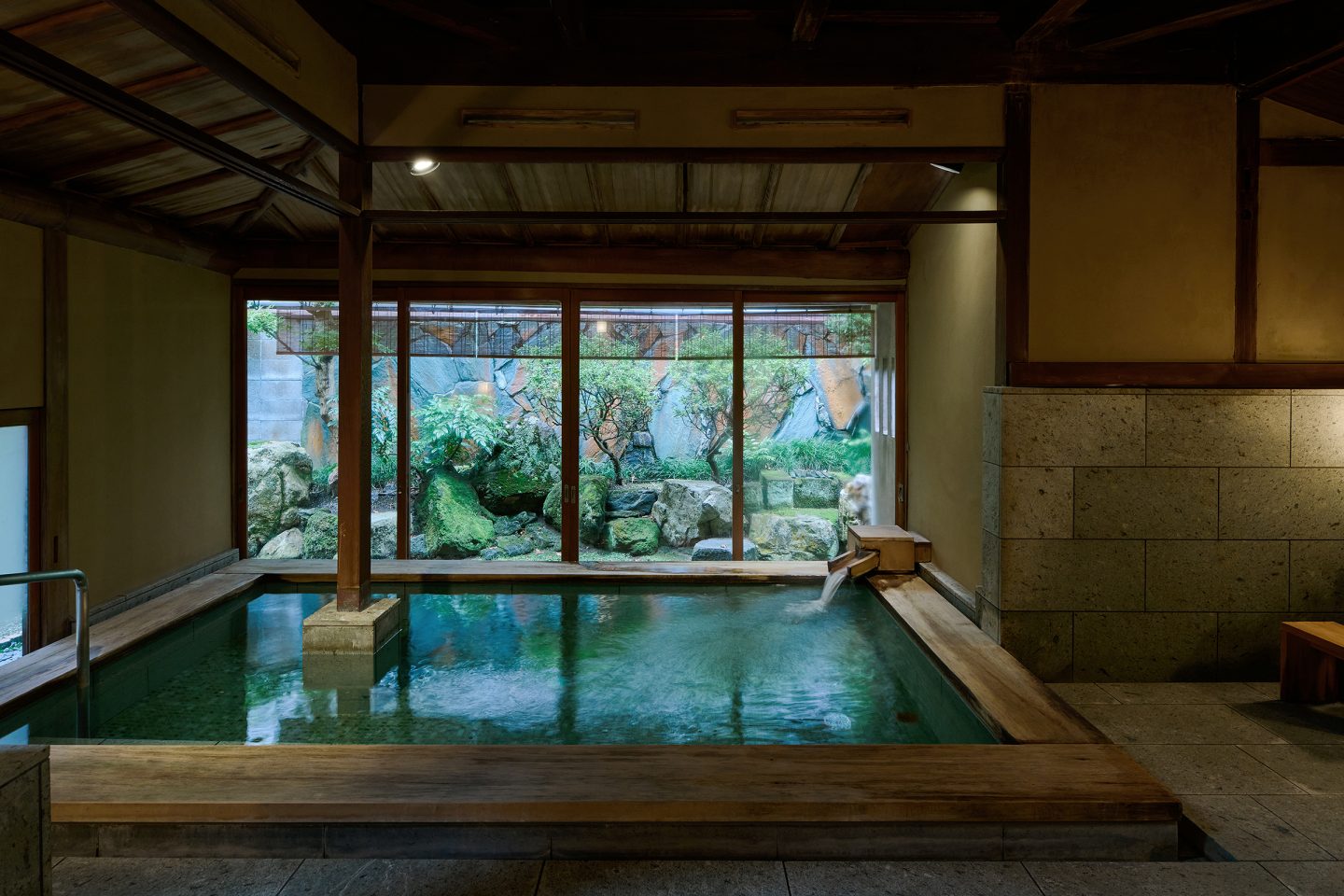
Mikiya
Kinosaki Onsen
Hyogo
Nationally Registered Tangible Cultural Property
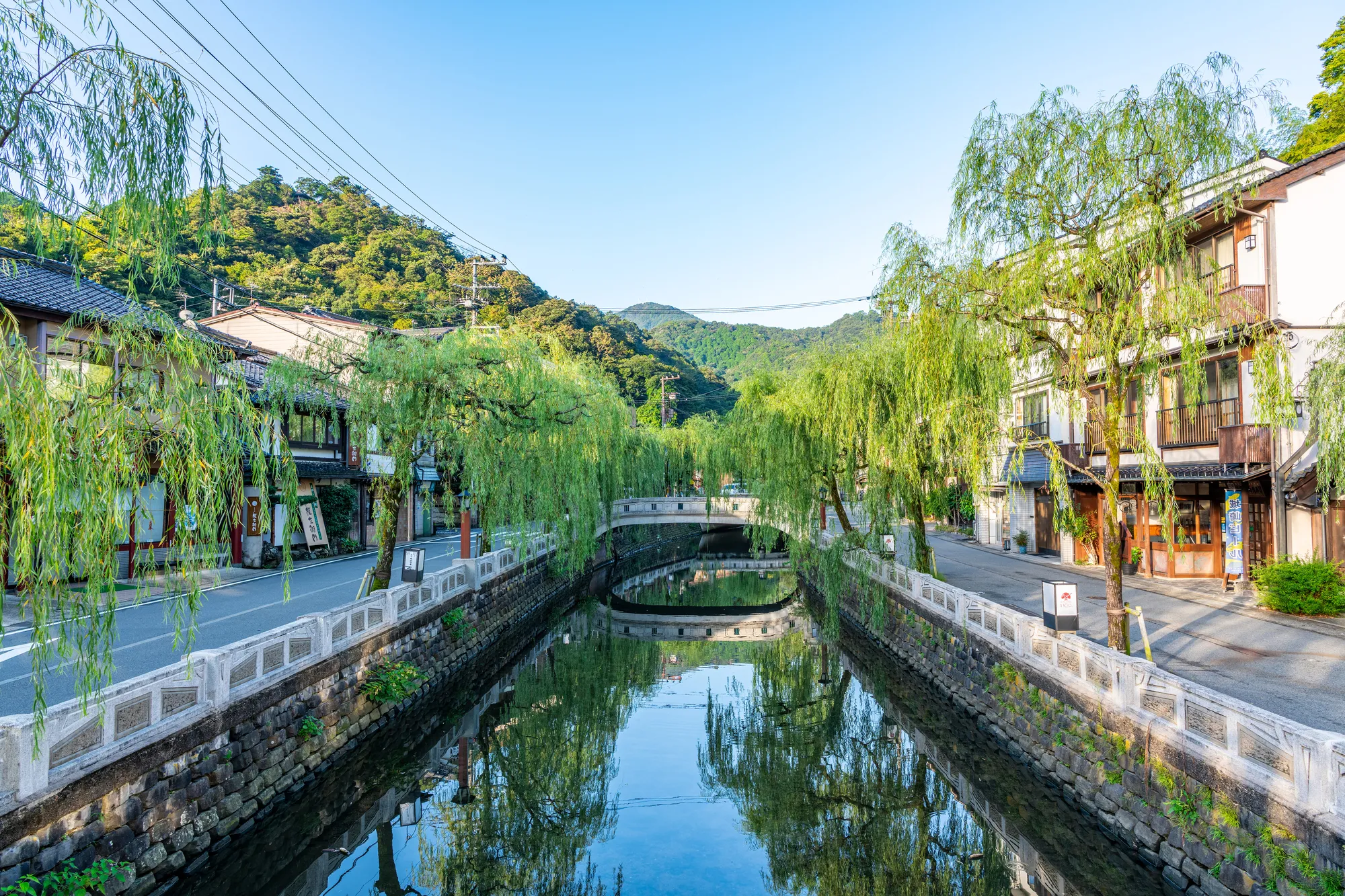
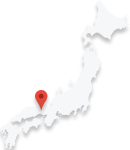
Kinosaki Onsen is one of the leading hot spring towns in the Kansai region, facing the Sea of Japan in northern Hyogo Prefecture. It has a history of more than 1,300 years.
One of the highlights of Kinosaki Onsen is the cityscape full of history and atmosphere. The stone drum bridge over the Ōtai River and the rows of willow trees along the river are a view full of Japan atmosphere that represents Kinosaki Onsen.
At Kinosaki Onsen, you can enjoy the scenery of the four seasons, such as cherry blossoms in spring, fireworks in summer, autumn leaves in autumn, and snowy scenery in winter. Access from Kyoto and Osaka is also convenient.
Kinosaki Onsen is adjacent to Kinosaki Onsen and has seven communal baths with different tastes and characteristics. They are Kono-yu, Mandara-yu, Gosho-no-yu, Ichi-no-yu, Yanagi-yu, Jizo-yu, and Sato-no-yu. There are many hot spring resorts in Japan, but Kinosaki Onsen is one of the few hot spring resorts with different communal baths in adjacent areas.
At Kinosaki Onsen, you can wear a yukata and stroll around the hot spring town. If you change into a yukata and geta, look at the quaint cityscape, and go around the communal baths, you can have the best hot spring experience.
Kinosaki Onsen is home to many high-end ryokan and Japanese-style inns. In addition to Japan hospitality, some of these ryokan also offer hot springs and open-air baths. The ryokan has plenty of relaxation facilities such as massages and esthetics, so you can spend a comfortable time during your stay.
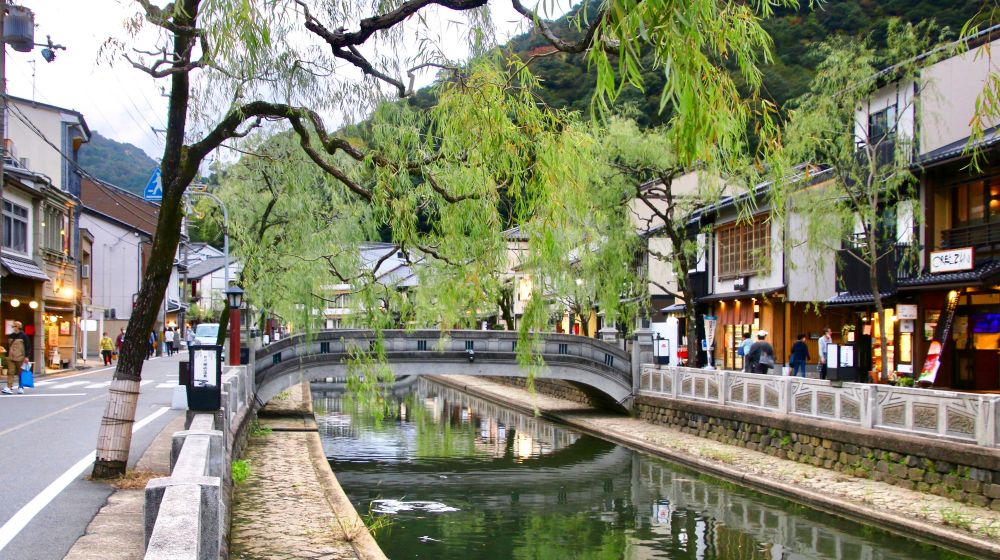
Eating in hot spring towns is one of the pleasures of traveling in Japan.
At Kinosaki Onsen, you can enjoy not only local seasonal ingredients, but also fresh seafood due to its proximity to the Sea of Japan. Famous local gourmet dishes are crab and Tajima beef. The crabs that are landed at the nearby port are a famous brand with a long history. In the waters of this area, warm and cold currents meet, and crabs that are packed with meat and flavor grow. In addition to crabs, a variety of seafood are landed each season. Tajima beef is said to be the original brand of Wagyu beef, and has a unique aroma and smooth texture.
There are many restaurants and eateries in the hot spring town, where you can enjoy traditional dishes made with these ingredients.
Kinosaki Onsen is also known as a hot spring that has been visited and loved by many poets, haiku poets, and literary figures throughout its long history. There are 23 literary monuments in the hot spring town. Literary monuments are erected in places associated with literary giants. While visiting the hot springs and sightseeing in the area, you can also visit these literary monuments.
And one more thing: the seven public bathhouses are among the few in Japan that are tattoo friendly. Even if you have tattoos, you can still bathe in the public bathhouses. Many Japanese hot springs do not allow people with tattoos to bathe in their public bathhouses. In other countries, tattoos are fashionable. In Japan, tattoos have long been associated with the image that tattoos = gang(yakuza) members, so you cannot bathe in onsen if you have tattoos.
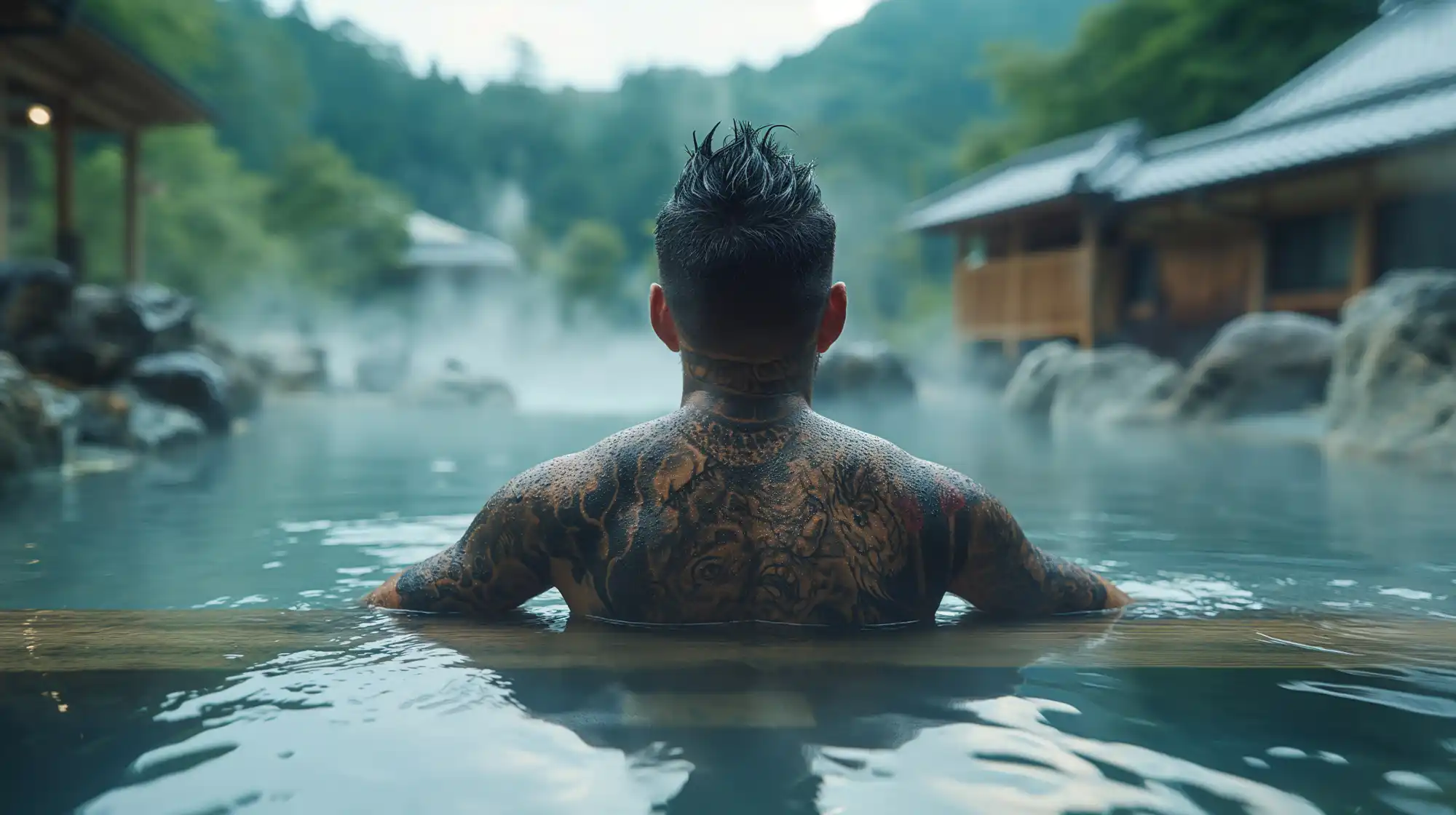
Many onsen ryokans in Kinosaki Onsen also do not allow tattoos. Even if you have a tattoo and are allowed to bathe, each facility has its own regulations, such as allowing tattoos of small size, covering tattoos with stickers, or asking you to use a private bath if one is available. At the seven public bathhouses located outside ryokans, visitors with tattoos can enjoy the hot springs without concern.
Kounotori Tajima Airport is the closest airport to Kinosaki Onsen. There is a direct flight to the airport from Osaka Itami Airport (Osaka International Airport). By train, JR Kinosaki Onsen Station is the nearest station.
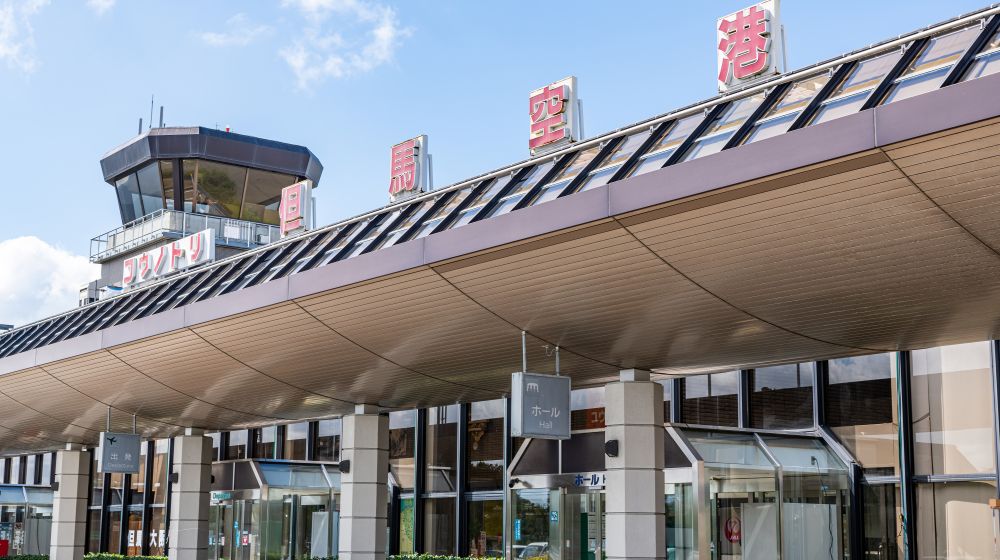
<Shinkansen / Train>
JR Tokyo Station→< JR Shinkansen Nozomi>→ JR Kyoto Station< Limited Express Kinosaki>→ JR Kinosaki Onsen Station (about 4 hours 40 minutes)
<Airplane>
Haneda Airport→ Osaka Itami Airport (Osaka International Airport), → Stork Tajima Airport→ Kinosaki Onsen Station (about 2 hours and 30 minutes)
Bus
Tokyo Station Kajibashi Parking Lot →< Night Bus >→ JR Kinosaki Onsen Station (about 12 hours 40 minutes)
<Shinkansen / Train>
JR Osaka Station→< Limited Express Kounotori>→ JR Kinosaki Onsen Station (about 2 hours 40 minutes)
<Airplane and bus>
Osaka Itami Airport (Osaka International Airport) → Stork Tajima Airport → Bus (about 1 hour 15 minutes)
<Bus>
Osaka Umeda Terminal → Kinosaki Onsen Station (about 3 hours 10 minutes)
<Shinkansen / Train>
JR Sannomiya Station→< Limited Express Hamakaze>→ JR Kinosaki Onsen Station (about 2 hours 30 minutes)
<Bus>
Kobe Sannomiya Buster → Kinosaki Onsen Station (about 3 hours 10 minutes)
Hot spring water is mixed and distributed from four sources.
The quality of the spring at Kinosaki Onsen is sodium-calcium-chloride spring. When you are in hot water, it is easy for your body to warm up and it is difficult for the water to cool down. Even if you get out of the hot water, the warm feeling of the bath will continue.
Hot water is colorless, transparent and odorless. It is effective for cuts, muscle pain, sensitivity to cold, and recovery from fatigue.
Hot water can be drunk as well as soaked. It is said that drinking hot springs can be expected to improve atrophic gastritis and constipation. The hot spring water tastes like thick mineral water with a salty and astringent taste.
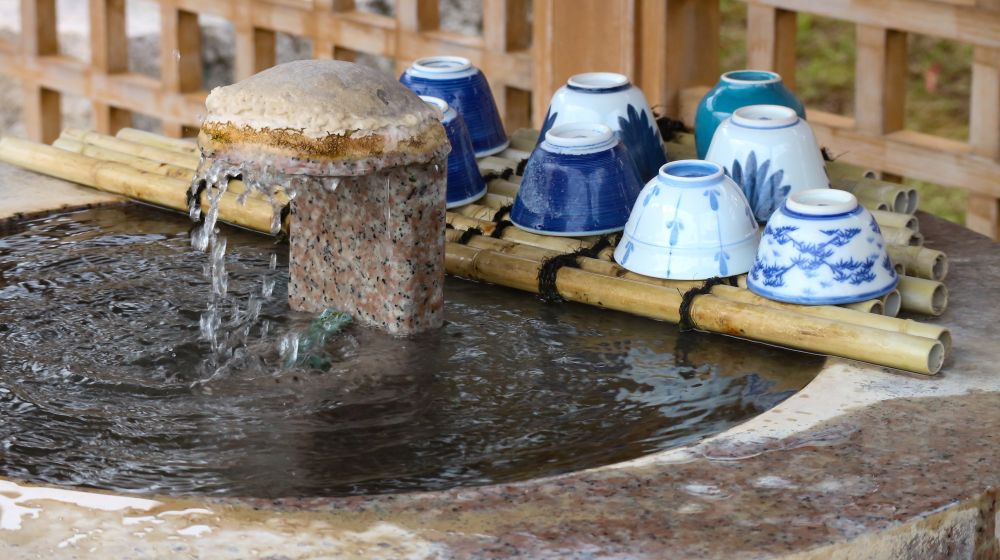
There are three drinking fountains in the hot spring town.
It is a drinking fountain where you can easily drink hot spring water by visiting the outdoor hot spring, but there are some precautions.
Drinking hot springs is not effective if you drink a lot. The amount to drink at one time is about 100ml ~ 150ml, and the total amount to drink per day is 200ml ~ 500ml. In addition, it is desirable to do it within 30 minutes after eating. Avoid drinking hot springs under the age of 15 without the guidance of a doctor with specialized knowledge.
The temperature at the source is about 57 degrees. When touching the hot spring from the spout, be careful not to burn yourself. You can bring your own cup or tumbler, but you are not allowed to take it home for drinking hot spring water.
About 1,300 years ago, in the Nara period, a monk named Michi Jojin who came to Kinosaki in 717 opened Kinosaki Onsen.
When he saw people suffering from incurable diseases, he prayed to the guardian god of the land, saying, "I want to save those who are suffering somehow."
Then, a gray-haired old man appeared in the dream of the Taoist and disappeared, saying, "If you dig under a tree in the southwest from here, you will find a hot spring." The Dōchijin, who received the oracle in a dream, performed a 1,000-day ritual in which he recited the sutra for 1,000 days.
It is said that on the 1,000th day, the day of the full wish, a spiritual spring gushed out, according to the oracle. The Dōchi Jojin enshrined the statue of Kannon and opened the hot spring temple in order to "make the hot springs prosper for a long time." This is said to be the beginning of Kinosaki Onsen.
Kinosaki Onsen has seven outdoor hot springs. They are Kono-yu, Mandara-yu, Gosho-no-yu, Ichi-no-yu, Yanagi-yu, Jizo-yu, and Sato-no-yu. In the Kamakura period (1185 ~ 1333), Gosho-yu, and in the Edo period (1603 ~ 1868), Ichino-yu, Yanagi-yu, and Jizo-yu were established one after another. The bathing effect and the beauty of the scenery gradually became known, and many nobles, high priests, cultural figures, etc. came to visit.
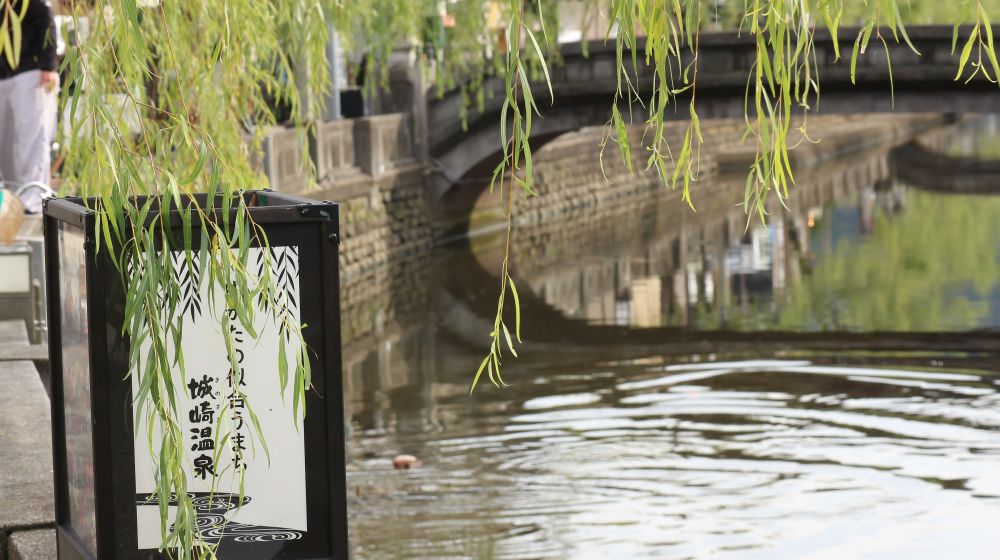
In the Edo period (1603~1868), Kagawa Shuan and Shibano Kuriyama created the first opportunity for Kinosaki Onsen to become famous as a hot spring resort.
Kinosaki Onsen became widely known when the physician Shuan Kagawa and the Confucian scholar Shibano Kuriyama introduced it as a hot spring that excelled in hot spring healing. At first, people who came for the purpose of hot spring healing relied on acquaintances to stay overnight, and they paid for their own meals.
As Kinosaki Onsen became famous and the customer base became popular, paid accommodation facilities developed.
During the Russo-Japanese War (1904~1905) fought between Japan and Russia, it was designated as a recuperation area for wounded and sick soldiers. In 1910, the San-in Line railway was opened and crowded with many people, but the town was abandoned by an earthquake that occurred in 1925. Fortunately, the source was not affected.
The damaged hot spring bathhouse was newly built and the land was rezoned. The current inns, shops, and townscapes centered on the outdoor baths were almost completed at this time.